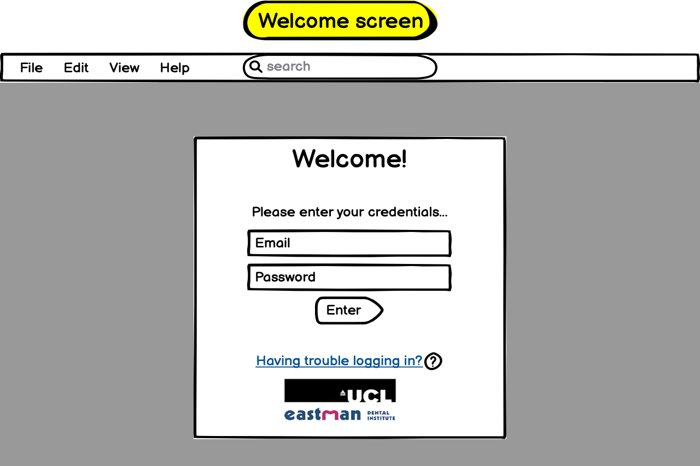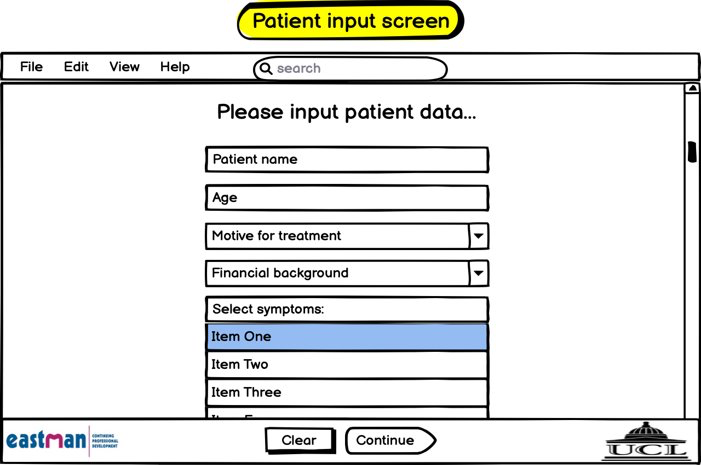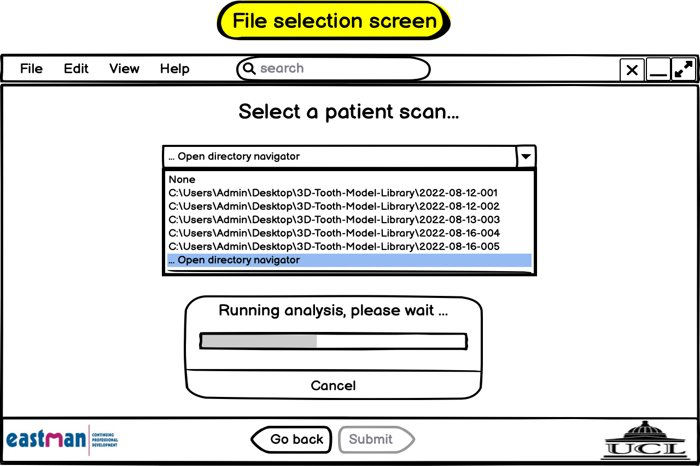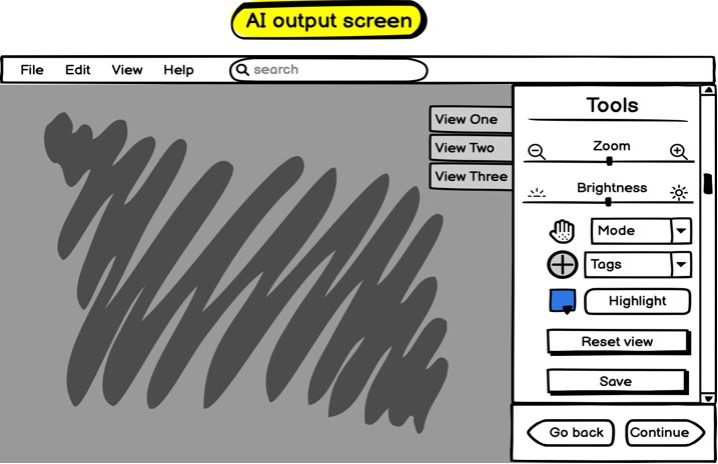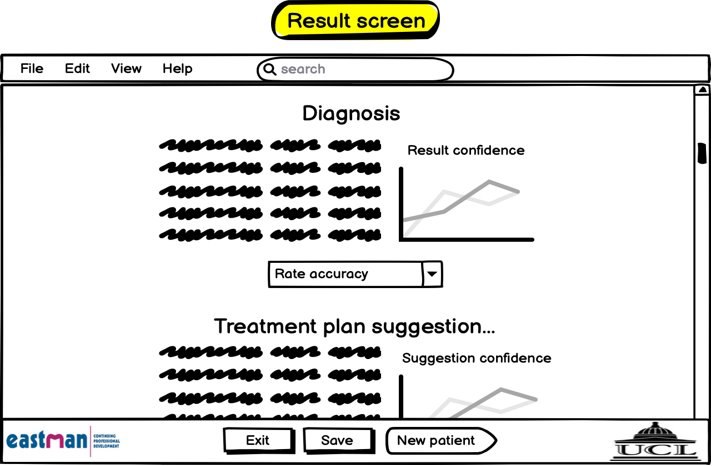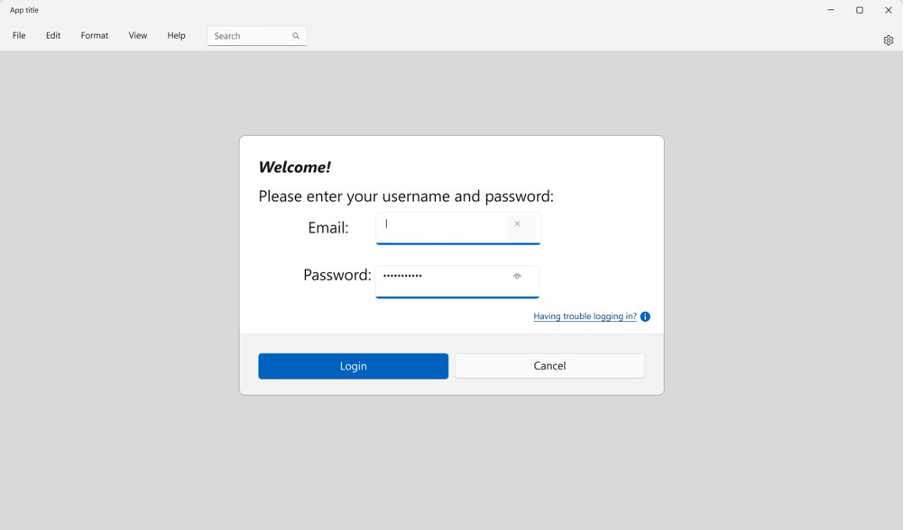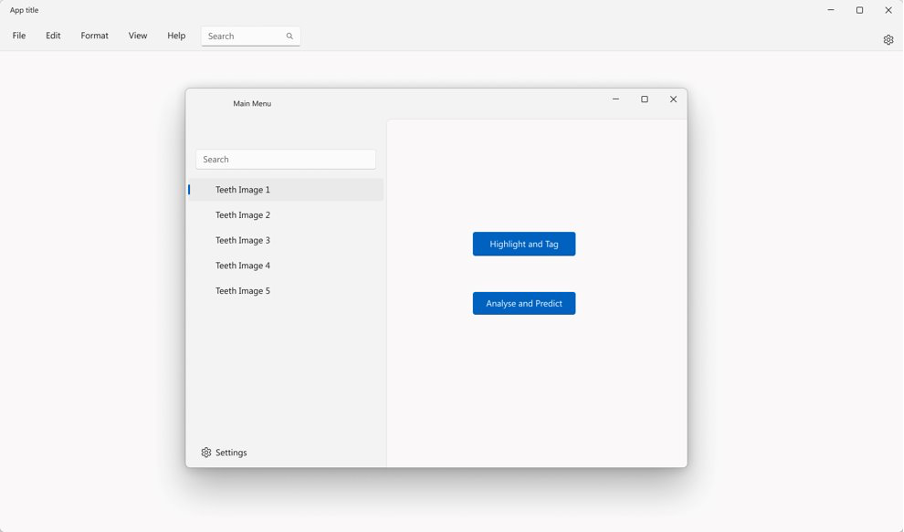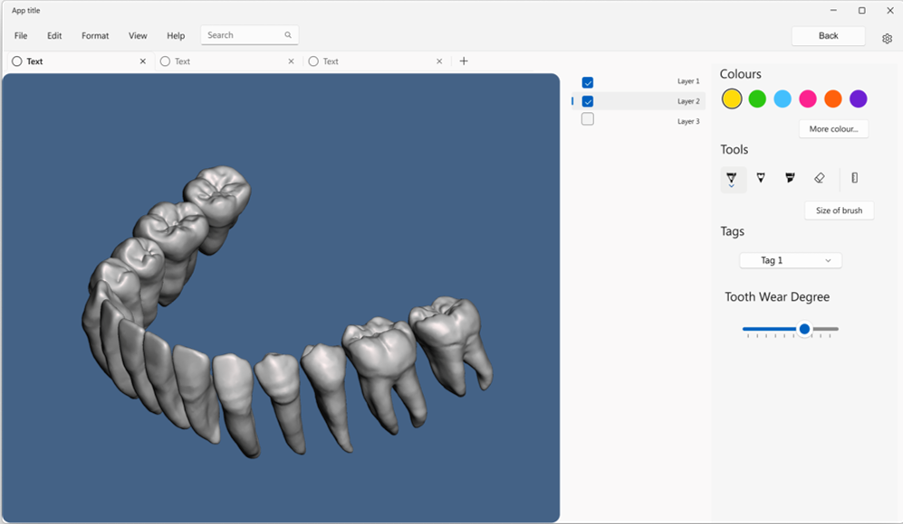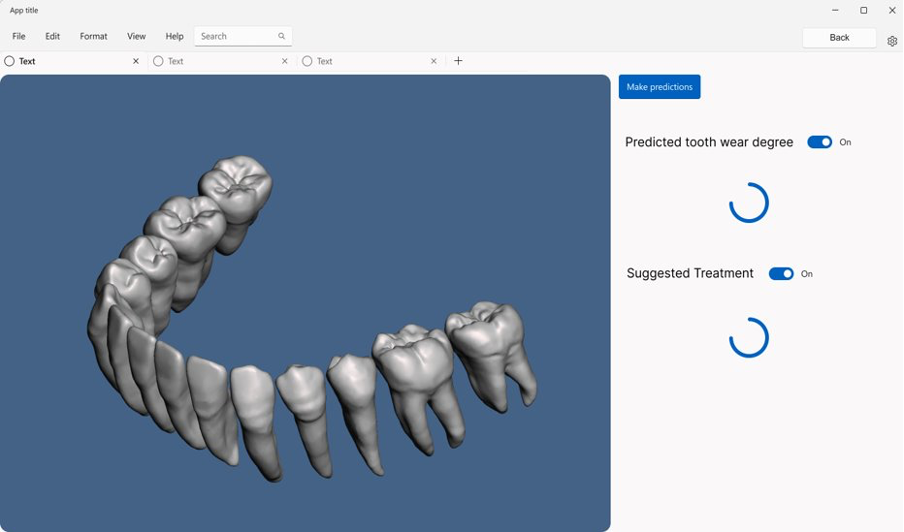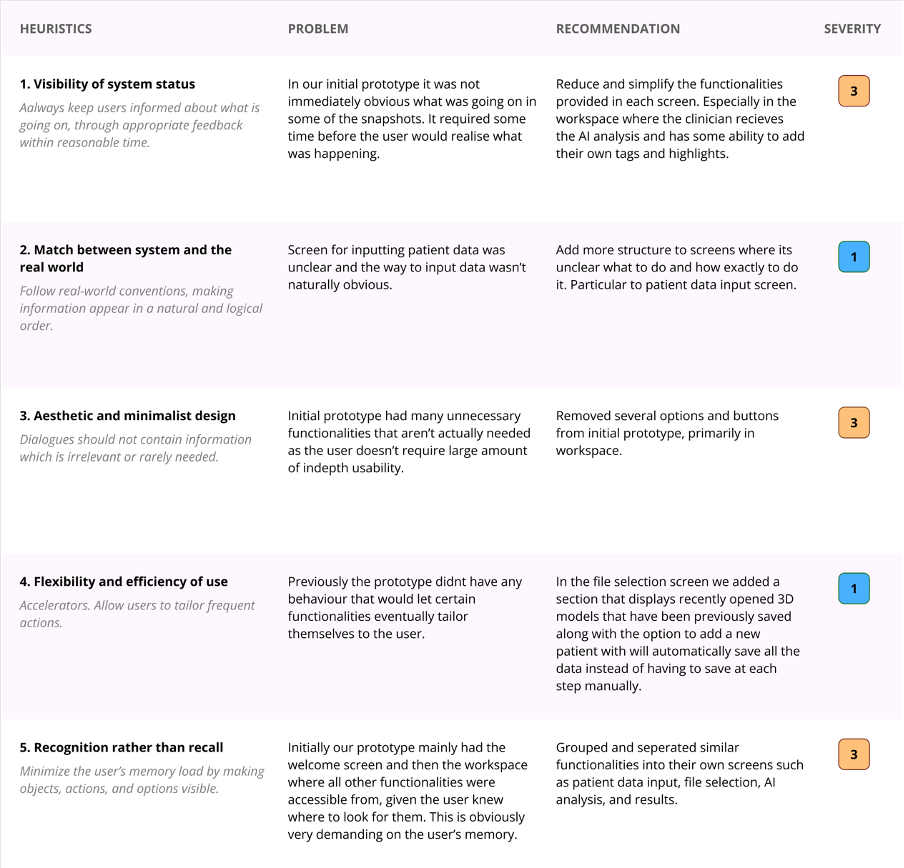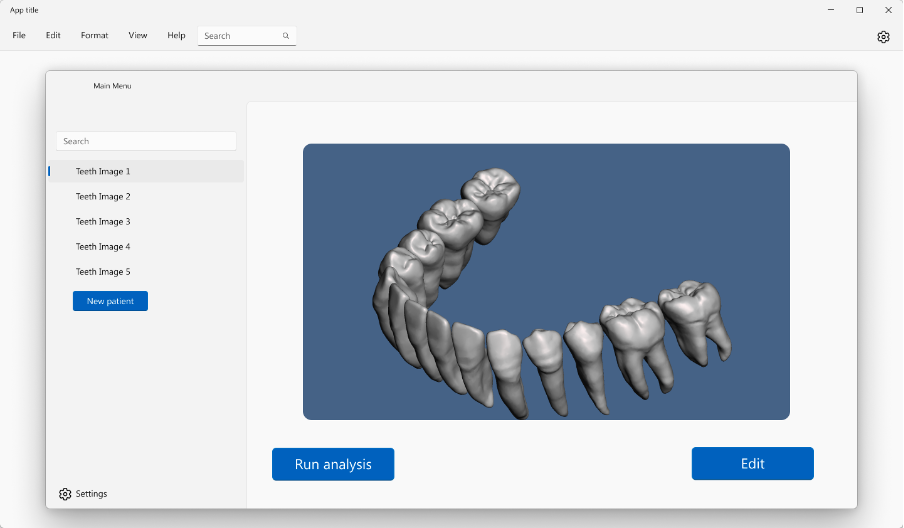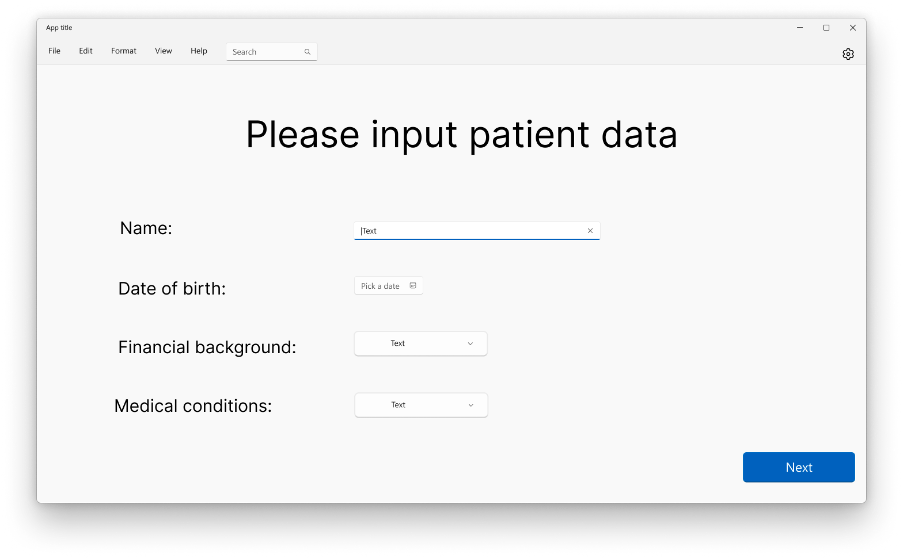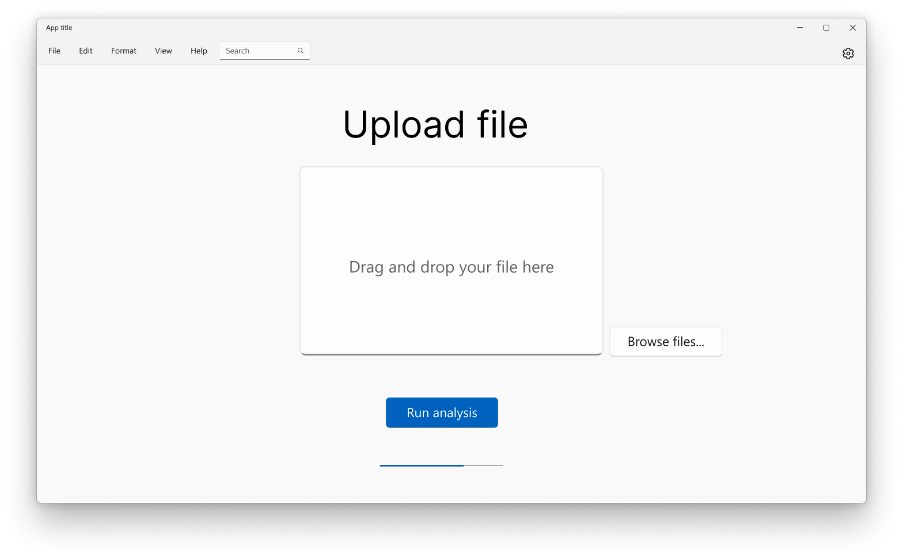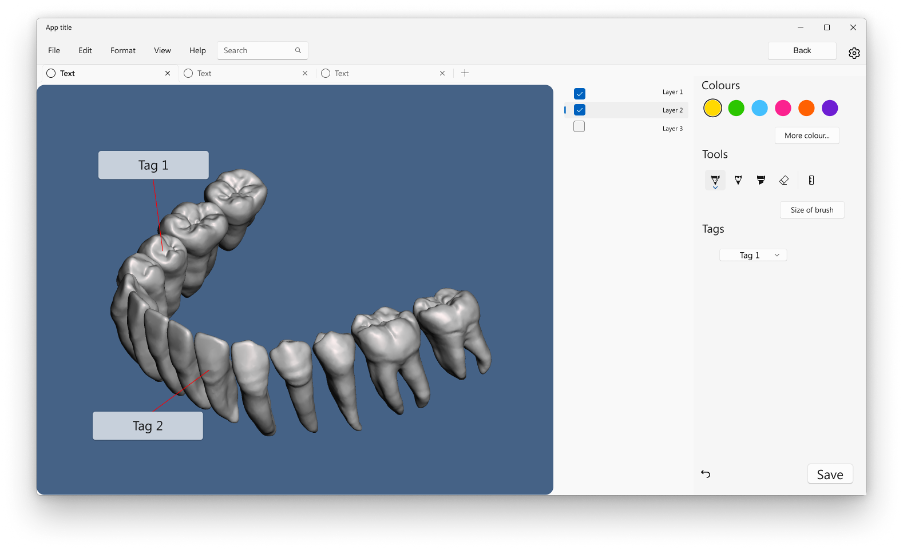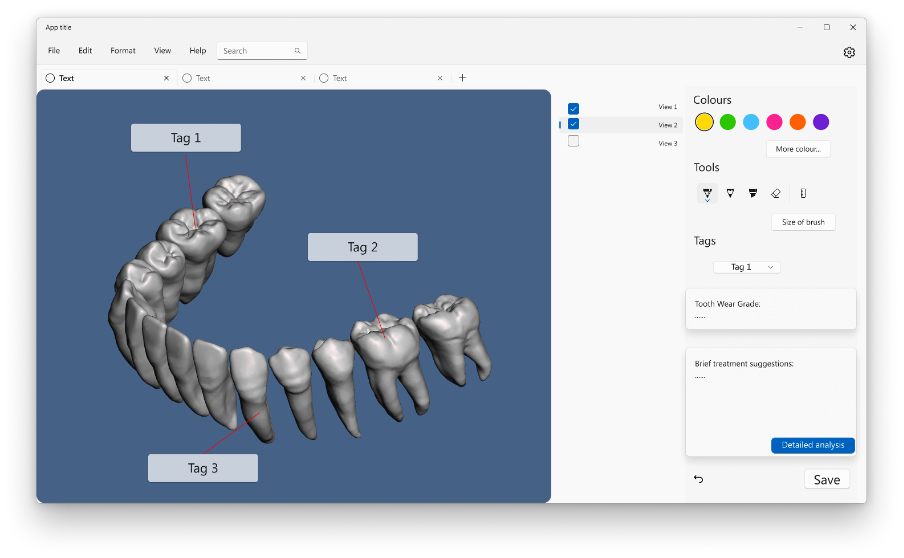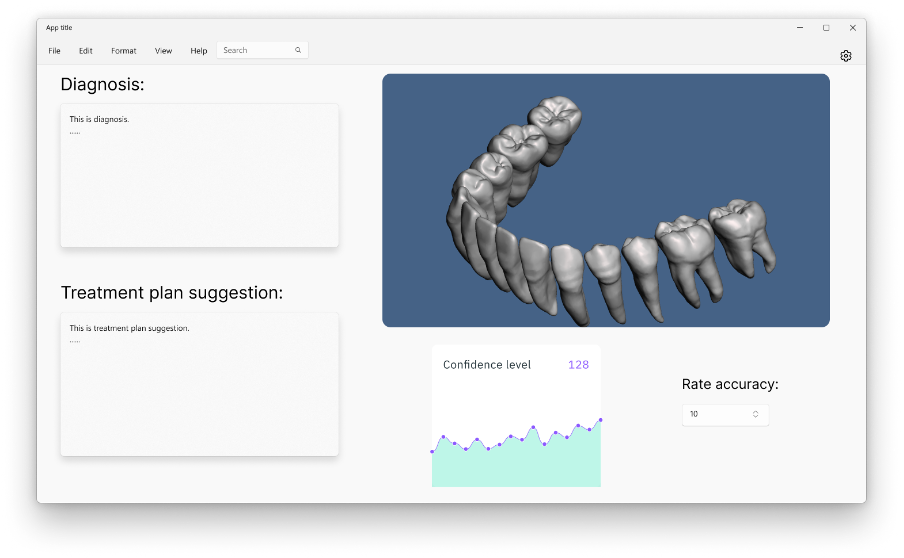Sketches
After gathering user requirements and understanding better the kind of software we are making and our users, we began sketching using Balsamiq. We created two alternative sketches for both the welcome screen and the actual workspace of the software as these would be the main points of interaction for the user.
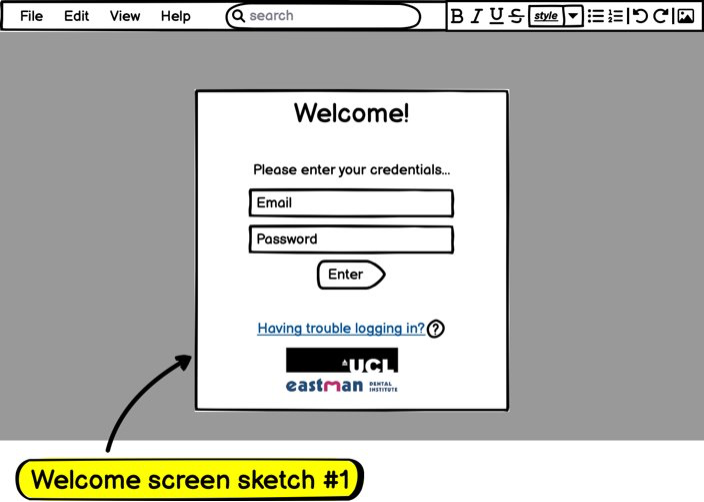
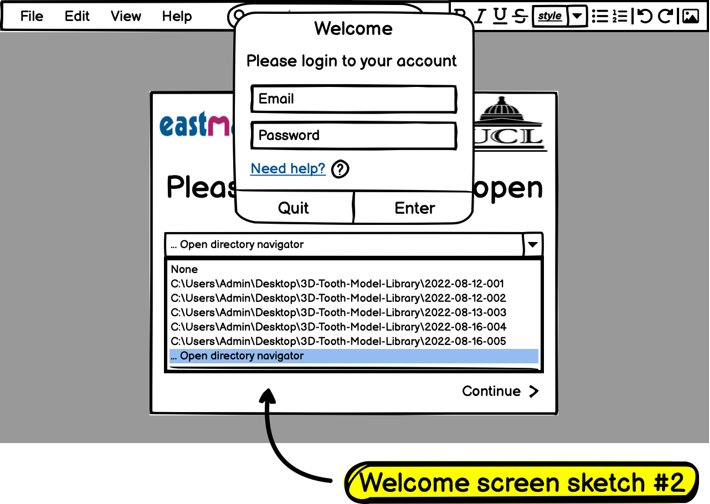
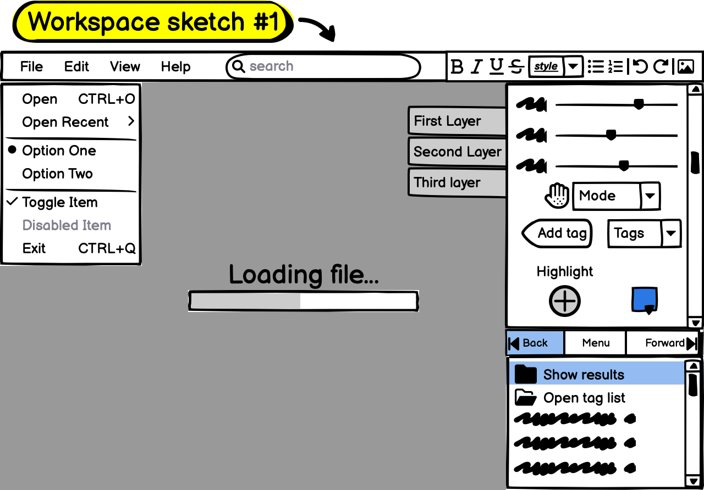
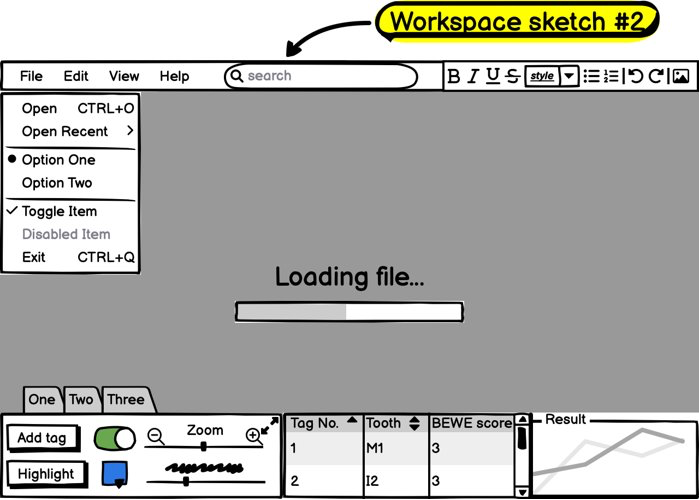
After receiving feedback, users preferred sketches #1 for both Welcome Screen and Workspace as they found it more intuitive. They also stated that the software should focus more on letting the user input patient data and show more detailed results. Hence, we iterated and expanded our initial sketches based on the feedback.
